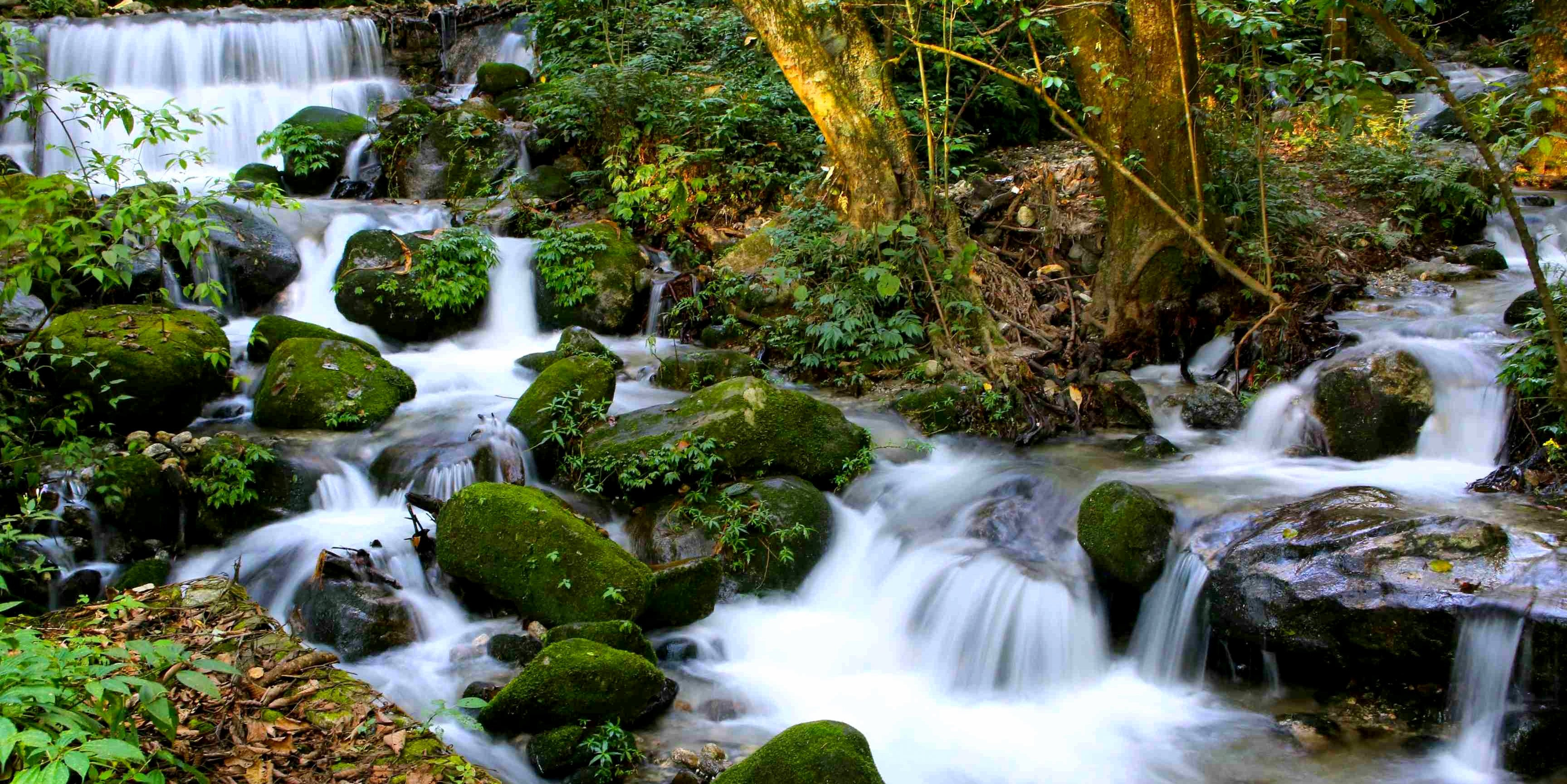Jalbire Waterfall
Jalbire Waterfall is a hidden gem located not far from Kathmandu, offering a serene and picturesque escape into nature. This waterfall is known for its accessibility, making it an excellent choice for a day trip from the bustling city. Visitors can enjoy the refreshing mist and the lush surroundings, which provide a peaceful retreat and an opportunity to reconnect with nature. The area around Jalbire Waterfall is also suitable for picnics, making it a popular spot among both locals and tourists seeking tranquility away from their daily routines.
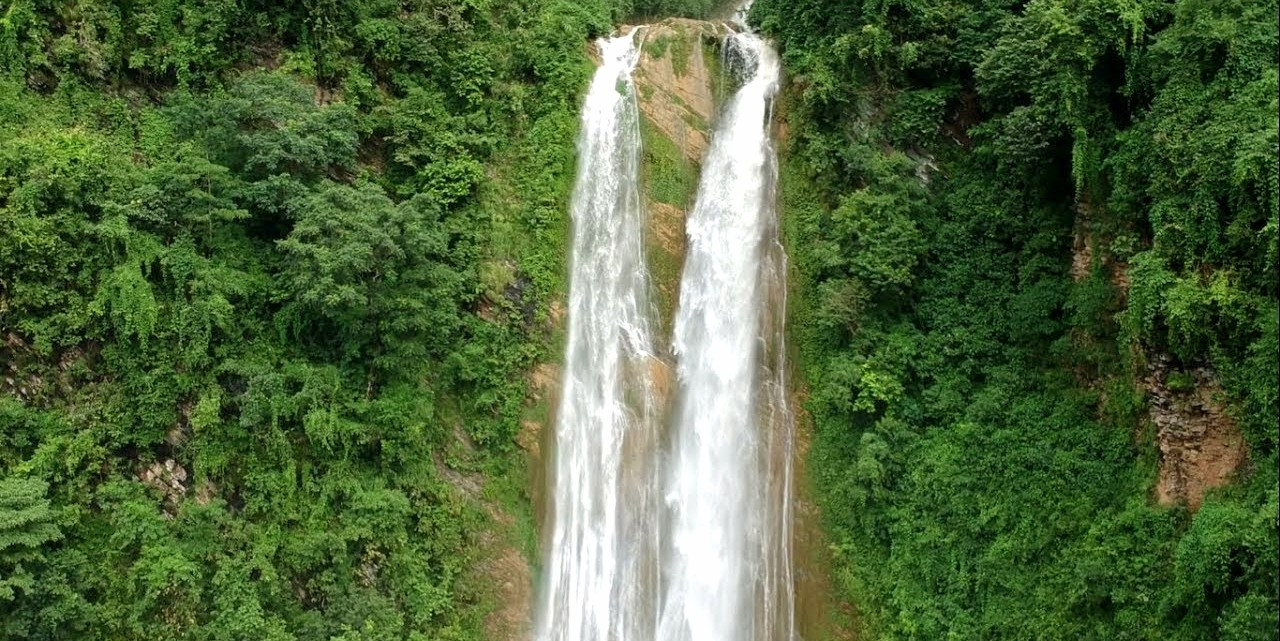
-
Location and Accessibility: Jalbire Waterfall is relatively close to Kathmandu, making it accessible for a day trip. The ease of access allows visitors to enjoy a quick escape to nature without embarking on a long journey. Its location is favored by those looking for a refreshing experience close to the city.
-
Natural Beauty: The waterfall is set in a lush, green environment, offering picturesque views that are perfect for photography. The natural setting provides a serene backdrop for visitors to unwind and enjoy the tranquil sounds of cascading water.
-
Activities: Visitors to Jalbire Waterfall can engage in a variety of activities, including picnicking in the scenic surroundings, nature walks to explore the local flora and fauna, and simply relaxing by the water. It's an ideal spot for those looking to connect with nature or spend quality time with family and friends.
-
Visitor Recommendations: For the best experience, it's recommended to visit Jalbire Waterfall during the dry season when the paths are less slippery, and the weather is more conducive to outdoor activities. Wearing appropriate footwear is advised to navigate the terrain comfortably.
-
Conservation and Respect: As with any natural site, visitors are encouraged to respect the environment around Jalbire Waterfall. This includes disposing of trash properly, not disturbing wildlife, and adhering to designated paths to preserve the natural beauty for future visitors
-
Cultural Significance: While primarily known for its natural beauty, the area around Jalbire Waterfall can also offer insights into local culture and traditions. Visitors have the opportunity to observe local lifestyles and possibly interact with residents, gaining a deeper appreciation of Nepal's diverse cultural heritage.
Jalbire Waterfall represents a blend of accessibility, natural beauty, and the opportunity for relaxation and cultural exploration near Kathmandu. It's a testament to the diverse experiences Nepal offers to those willing to explore its natural landscapes.
Muhan Pokhari
Muhan Pokhari is a serene and somewhat hidden destination located in the vicinity of Kathmandu, known for its lush landscapes and tranquil environment. This spot is a haven for those seeking peace away from the hustle and bustle of city life, offering a unique blend of natural beauty and a quiet, reflective atmosphere. Below are some key points and explanations about Muhan Pokhari:
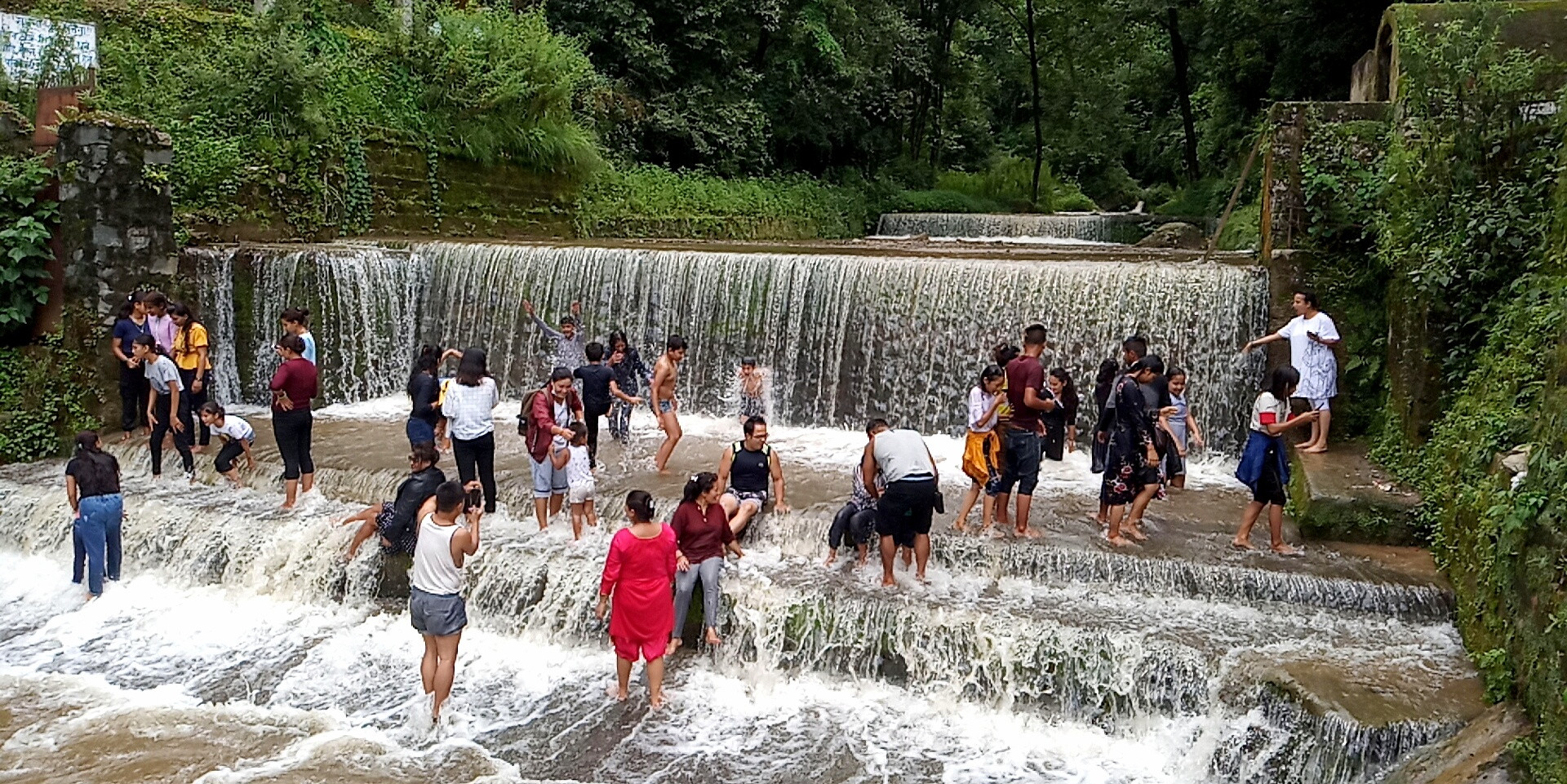
-
Location and Accessibility: Situated in Bhaktapur, just 23 kilometers from Kathmandu, Muhan Pokhari is easily accessible for those looking for a short escape into nature. Its proximity to the city makes it a convenient choice for day trips.
-
Natural Environment: Surrounded by lush green hills, waterfalls, and clear lakes, Muhan Pokhari offers a picturesque setting that is ideal for nature lovers. The area's rich biodiversity, including various plants and animals, adds to its charm, making it a perfect spot for hiking and bird watching.
-
Tranquility and Relaxation: The calm and peaceful atmosphere of Muhan Pokhari provides a tranquil environment for visitors. It's an excellent place for meditation, yoga, or simply spending some quiet time in reflection amidst natural surroundings.
-
Activities and Exploration: Visitors to Muhan Pokhari can engage in various activities, such as exploring the surrounding nature trails, enjoying the scenic beauty of the waterfalls and lakes, or having a picnic in one of the area's picturesque spots. It's also an excellent location for photography enthusiasts to capture the beauty of the Nepalese landscape.
-
Conservation Efforts: As a natural area close to Kathmandu, Muhan Pokhari is subject to conservation efforts to maintain its beauty and ecological balance. Visitors are encouraged to respect the environment by minimizing their impact and following guidelines for responsible tourism.
-
Cultural Insights: While primarily known for its natural aspects, a visit to Muhan Pokhari can also offer insights into the local culture and traditions of the region. The area's proximity to Bhaktapur, a city rich in history and culture, provides an opportunity to explore Nepalese heritage further.
Muhan Pokhari stands out as a peaceful retreat, offering both natural beauty and a chance to disconnect from the daily grind. Its combination of accessible location, tranquil environment, and the possibility for exploration and cultural discovery makes it a must-visit spot for those traveling to or near Kathmandu.
Bishnudwar Waterfall
Bishnudwar Waterfall is a stunning natural attraction located in the outskirts of Kathmandu, Nepal, at the source of the holy Bishnumati River. This beautiful waterfall is not just a feast for the eyes but also holds significant spiritual importance. Below are some key points and explanations about Bishnudwar Waterfall:
-
Location and Spiritual Significance: Bishnudwar Waterfall is nestled at the top of the Shivapuri Hills, marking the origin of the Bishnumati River. The waterfall and the river both bear great religious importance to Hindus and Buddhists, symbolizing purity and sanctity. The name 'Bishnudwar' directly translates to the 'Door of Lord Vishnu,' highlighting its spiritual significance.
-
Accessibility and Hike: Reaching Bishnudwar Waterfall involves a hike through Shivapuri National Park, starting from Budhanilkantha. The trek is about 30 to 40 minutes long and offers a tranquil journey through richly forested paths. It's an excellent opportunity for nature lovers to immerse themselves in the serenity of the woods while en route to the waterfall.
-
Natural Beauty and Environment: The area around Bishnudwar Waterfall is noted for its serene surroundings, fresh air, and the melodious sounds of cascading water. It provides a refreshing break from the hustle and bustle of city life, making it a perfect spot for meditation, relaxation, and photography.
-
Best Time to Visit: The best time to visit Bishnudwar Waterfall is during the monsoon and post-monsoon seasons when the water flow is at its peak, making the waterfall even more majestic. However, visitors should be cautious as the paths can be slippery during these times.
-
Conservation and Respect for Nature: Being located within Shivapuri National Park, the area around Bishnudwar Waterfall is protected. Visitors are encouraged to follow the park's guidelines, such as disposing of waste properly and maintaining silence to preserve the sanctity and natural beauty of the region.
-
Cultural and Ecotourism Aspects: Visiting Bishnudwar Waterfall offers more than just a natural experience; it's an opportunity to engage with local culture and participate in ecotourism. The trek to the waterfall supports local guides and contributes to the conservation efforts of Shivapuri National Park.
Bishnudwar Waterfall is an embodiment of natural beauty intertwined with spiritual essence, offering a unique blend of ecological, cultural, and spiritual tourism. Its tranquil atmosphere and sacred significance make it a must-visit destination for those seeking peace and natural beauty near Kathmandu.
Nagarkot Waterfall
Nagarkot Waterfall is a scenic beauty nestled in the renowned hill station of Nagarkot, not far from Kathmandu, Nepal. Famous for its breathtaking views of the Himalayas, Nagarkot also hides this lesser-known gem, offering a peaceful retreat into nature. Here’s what makes Nagarkot Waterfall a must-visit for nature lovers and adventurers:
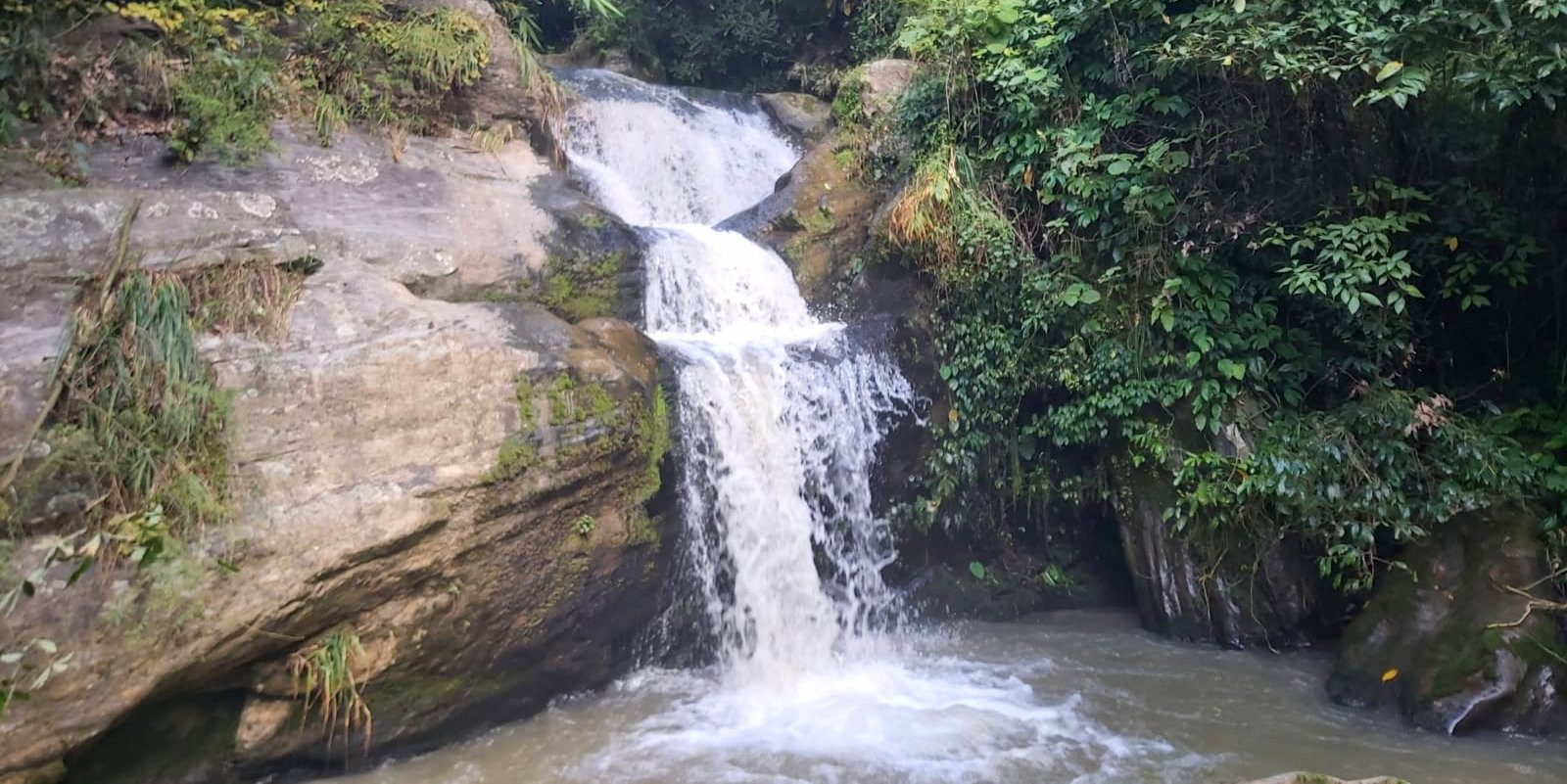
-
Scenic Location: Positioned amidst the lush greenery and serene landscapes of Nagarkot, the waterfall is an idyllic spot for relaxation and rejuvenation. The area's natural beauty is accentuated by the waterfall, making it a picturesque destination for visitors.
-
Accessibility: Reaching Nagarkot Waterfall involves a scenic drive from Kathmandu, followed by a short hike. The journey itself offers panoramic views and a refreshing escape from the city's hustle. While the roads may be a bit bumpy, the destination promises tranquility and beauty.
-
Activities: Beyond admiring the waterfall, visitors can enjoy hiking in the surrounding areas, photography, and picnicking in this serene environment. The crisp air and the sound of the cascading water create a perfect backdrop for a day out in nature.
-
Best Time to Visit: The best time to experience the Nagarkot Waterfall is during the monsoon season when the water is plentiful and the surrounding vegetation is lush. However, visitors should be prepared for slippery paths during this time.
-
Conservation Efforts: As with many natural sites, visitors to Nagarkot Waterfall are encouraged to practice responsible tourism by leaving no trace, ensuring that the beauty of the area is preserved for future generations.
-
Combining Sightseeing: A trip to Nagarkot Waterfall can be combined with other activities in Nagarkot, such as watching the sunrise over the Himalayas or exploring the local flora and fauna. It’s an opportunity to fully immerse oneself in the natural and cultural richness of the region.
Nagarkot Waterfall is a tranquil escape offering a unique blend of natural beauty, adventure, and peace. It's a reflection of Nepal's vast and diverse natural landscape, providing a serene getaway for those looking to explore the natural wonders beyond the city limits of Kathmandu.
Tindhare Jharna
Tindhare Jharna, also known as Bahubali Waterfall, is a breathtaking natural wonder situated in the Kavrepalanchowk district, near Kathmandu, Nepal. This magnificent waterfall has gained popularity for its stunning beauty, towering height, and the serene landscape that surrounds it. Here are some key points about Tindhare Jharna:
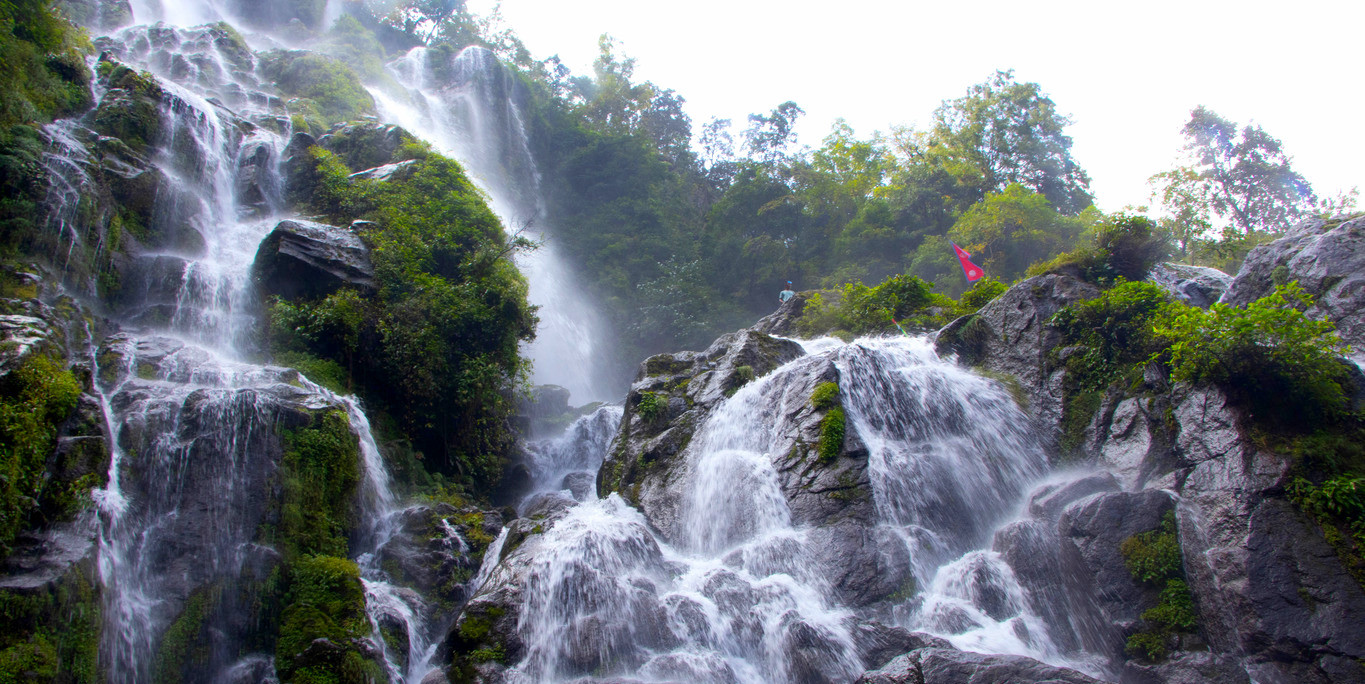
-
Majestic Height: Tindhare Jharna is known for its impressive height, with water cascading down from a considerable elevation. This feature creates a spectacular visual and auditory experience for visitors, as they witness the power and grace of nature.
-
Nickname - Bahubali Waterfall: The waterfall is affectionately nicknamed after the famous Indian movie "Bahubali" due to its majestic and grand appearance, reminiscent of the waterfall showcased in the film. This nickname has added to its allure and drawn movie fans and nature enthusiasts alike.
-
Location and Accessibility: Located approximately a few hours' drive from Kathmandu, reaching Tindhare Jharna involves a scenic journey through the Nepalese countryside, followed by a hike. The route offers visitors a glimpse into the rural beauty of Nepal, with the final destination being well worth the effort.
-
Natural Setting: Surrounded by lush vegetation and the rugged terrain of the Kavrepalanchowk district, Tindhare Jharna is set in a pristine environment. The area around the waterfall is ideal for exploration, offering a peaceful retreat and a chance to reconnect with nature.
-
Activities and Experiences: Visitors to Tindhare Jharna can enjoy a range of activities, including hiking, photography, and picnicking. The natural beauty of the waterfall and its surroundings provide a perfect backdrop for memorable experiences.
-
Conservation and Tourism: As Tindhare Jharna becomes increasingly popular, efforts to conserve its natural beauty are paramount. Visitors are encouraged to respect the environment by minimizing their impact and supporting local conservation initiatives.
Tindhare Jharna stands as a testament to Nepal's natural splendor, offering an awe-inspiring experience for those willing to venture off the beaten path. Its combination of natural beauty, cultural significance, and the adventure of reaching it make it a must-visit destination for nature lovers exploring the Kathmandu Valley and beyond.
Simba Falls
Simba Falls, located in the serene and lush landscapes of Manikhel, is one of the hidden treasures near Kathmandu, Nepal. This picturesque waterfall is named "Simba," which signifies "cold water" in the local Tamang language, reflecting the refreshing and invigorating nature of the falls. Below are key points about Simba Falls:
-
Scenic Location: Nestled in Manikhel village, Simba Falls is surrounded by a verdant environment, offering stunning views and a tranquil atmosphere. The village is perched above 2000 meters, adding a touch of serenity and isolation that makes the falls even more appealing to those seeking peace amidst nature.
-
Cultural Significance: The village of Manikhel is predominantly inhabited by the Tamang community, providing visitors with a unique opportunity to experience local culture and traditions. The area around Simba Falls not only showcases natural beauty but also offers a glimpse into the lifestyle and heritage of the Tamang people.
-
Accessibility and Adventure: Reaching Simba Falls requires a bit of adventure, involving a drive from Kathmandu followed by a trek. The walk to the falls is an opportunity to immerse oneself in the beauty of the Nepalese countryside, with the final destination rewarding trekkers with its stunning views and the soothing sound of falling water.
-
Activities: Visitors to Simba Falls can engage in various activities such as picnicking, photography, and exploration of the surrounding area. The falls offer a perfect backdrop for those looking to relax and enjoy nature's bounty.
-
Conservation Efforts: As with many natural sites in Nepal, visitors to Simba Falls are encouraged to practice responsible tourism. This includes respecting the local environment, minimizing waste, and ensuring that the natural beauty of the area is preserved for future generations.
-
Best Time to Visit: The best time to visit Simba Falls is during the warmer months when the weather is pleasant, and the water flow is ideal for enjoying the waterfall's full splendor. However, visitors should be prepared for cooler temperatures due to the elevation.
Simba Falls is a testament to the untouched natural beauty of Nepal, offering an escape for those looking to explore beyond the well-trodden paths. Its combination of natural splendor, cultural richness, and the adventure of reaching it make it a must-visit spot for anyone exploring the Kathmandu Valley and its surroundings.
Sundarijal Waterfall
Sundarijal Waterfall, located 17 kilometers northeast of Kathmandu Valley, is a renowned destination for its natural beauty and recreational activities. Named 'Sundarijal' for its 'beautiful water', this area serves as both a historical and ecological site, drawing visitors with its cascading falls, lush surroundings, and the rich cultural backdrop it provides. Here are key aspects of Sundarijal Waterfall:
-
Natural Beauty and Water Resources: Sundarijal is celebrated for its cascading waterfalls, clear streams, and lush forest, offering a refreshing escape into nature. The area's natural beauty is complemented by the rugged landscapes of the Shivapuri National Park, making it a perfect spot for nature lovers and photographers.
-
Activities and Recreation: Sundarijal offers a range of activities including hiking, swimming, and canyoning. It is also a popular starting point for treks into the Shivapuri National Park. The cool waters of the waterfall provide a serene spot for picnicking and relaxation away from the city's hustle.
-
Cultural and Historical Significance: Beyond its natural allure, Sundarijal holds historical importance, housing water reservoirs that have been crucial for Kathmandu's water supply. Additionally, the area is tied to various local legends and traditions, enriching visitors' experience with cultural depth.
-
Accessibility: Easily accessible from Kathmandu, Sundarijal is a favored choice for day trips. Visitors can take a local bus or a short drive to reach this tranquil spot, making it convenient for both locals and tourists.
-
Conservation Efforts: Located at the gateway to the Shivapuri National Park, Sundarijal is part of a protected area with efforts in place to conserve its biodiversity and water resources. Visitors are encouraged to respect the natural environment and support these conservation efforts.
-
Best Time to Visit: The ideal time to visit Sundarijal Waterfall is during the spring and autumn months when the weather is pleasant, and the natural scenery is at its most vibrant. Monsoon season also brings a fuller flow to the waterfall, though visitors should be prepared for wet conditions and slippery paths.
Sundarijal Waterfall offers a unique combination of natural beauty, recreational activities, and cultural heritage, making it a must-visit destination for those exploring the Kathmandu Valley. Its accessibility and the variety of experiences it offers make Sundarijal a cherished spot for both relaxation and adventure.
Mailung Waterfall
Mailung Waterfall, also known as Mailung Jharna or Bhange Jharna, is a captivating natural attraction nestled in the Rasuwa district, a relatively remote region near Kathmandu, Nepal. This hidden gem showcases the untouched beauty of Nepal’s landscapes and offers an adventure for those seeking to explore the natural wonders beyond the well-trodden paths of the Kathmandu Valley. Here are some key aspects of Mailung Waterfall:
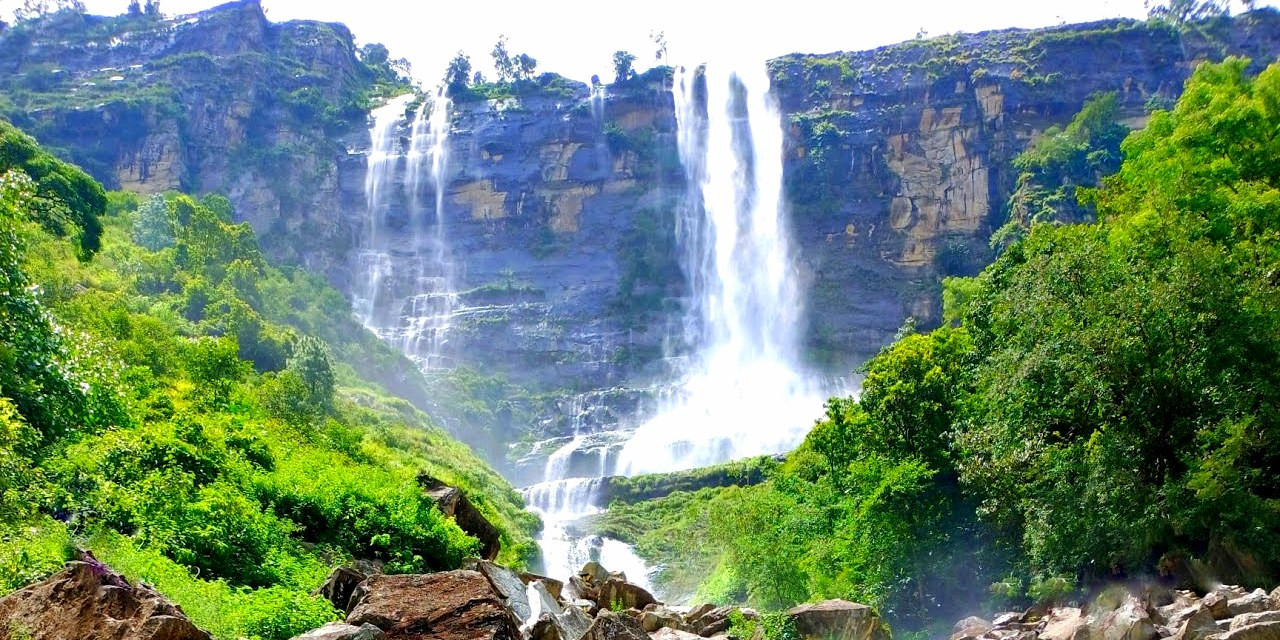
-
Remote and Pristine Location: Mailung Waterfall is situated in an area characterized by its rugged terrain and lush greenery, providing a perfect backdrop for adventurers and nature enthusiasts. The waterfall's secluded location ensures a peaceful experience, away from the crowded tourist spots.
-
Adventure and Accessibility: Reaching Mailung Waterfall involves a journey through the beautiful landscapes of Rasuwa district, which can be both challenging and rewarding. The trip may require off-road travel, making it an adventure in itself. This journey offers a unique opportunity to witness the rural beauty and cultural richness of Nepal.
-
Natural Splendor: The waterfall is known for its majestic beauty, with water cascading down into a serene pool below. The area around Mailung Waterfall is a haven for biodiversity, featuring a variety of flora and fauna that add to the site's natural appeal.
-
Activities: Visitors to Mailung Waterfall can indulge in several activities, including hiking, swimming in the natural pools, photography, and simply enjoying the tranquility of the surroundings. The area also offers spots for picnicking, making it a perfect day trip for those looking to immerse themselves in nature.
-
Conservation Awareness: Given its remote location, the area around Mailung Waterfall remains relatively untouched by development. Visitors are encouraged to practice responsible tourism by minimizing their environmental impact and respecting the natural habitat.
-
Best Time to Visit: The best time to visit Mailung Waterfall is during the post-monsoon season when the water flow is at its peak, offering a more spectacular view of the waterfall. However, travelers should be prepared for the roads and trails to be more challenging during this time.
Mailung Waterfall is an embodiment of the pristine and adventurous spirit of Nepal’s lesser-known natural landscapes. It offers a peaceful retreat for those willing to venture off the beaten path and explore the natural beauty that lies hidden within Nepal’s rugged terrain.
Tips for Hidden Waterfalls around Kathmandu
Exploring hidden waterfalls around Kathmandu can be an exhilarating experience, offering a mix of adventure, tranquility, and natural beauty. Whether you're a seasoned trekker or a casual day-tripper, these tips can help you make the most of your waterfall adventures:
-
Research and Plan Ahead: Before you set out, research the specific waterfall you plan to visit. Understand the route, distance, expected time, and any entry requirements. Planning helps in ensuring you have enough time to enjoy the waterfall without rushing.
-
Check the Weather: Weather conditions can significantly affect your experience and safety. Heavy rains can make trails slippery and dangerous, while the dry season might reduce the waterfall to a trickle. Aim for a visit just after the monsoon season for the best flow while ensuring trails have dried out.
-
Wear Appropriate Gear: Sturdy hiking shoes with good grip are essential, as trails can be uneven and slippery. Also, pack a light rain jacket, as weather can be unpredictable. If you plan to swim, don't forget a change of clothes.
-
Stay Hydrated and Bring Snacks: There may be limited facilities near hidden waterfalls, so carry enough water and some energy-boosting snacks. Staying hydrated and energized is crucial, especially on longer treks.
-
Leave No Trace: Preserve the natural beauty for future visitors by carrying out all your trash. Avoid disturbing wildlife and plant life. Stick to marked trails to minimize your impact on the environment.
-
Respect Local Customs and Communities: Many waterfalls are located near or are part of local communities with their own customs and traditions. Showing respect and courtesy enhances your experience and supports sustainable tourism.
-
Safety First: Always let someone know your plans, especially if venturing to more secluded waterfalls. Be cautious near water, as rocks can be slippery and currents stronger than they appear.
-
Photography Etiquette: While capturing the beauty of the waterfalls, be mindful of your surroundings. Avoid blocking paths or taking excessive time in popular photo spots, especially if others are waiting.
-
Consider a Guide for Remote Locations: Consider hiring a local guide for less-known or harder-to-reach waterfalls. This supports the local economy, and guides can offer insights into the area's history, flora, and fauna, enhancing your visit.
-
Enjoy and Take Your Time: Remember to enjoy the journey as much as the destination. Hidden waterfalls offer a chance to connect with nature, so take your time to soak in the views, sounds, and tranquility.
Exploring the hidden waterfalls around Kathmandu is an adventure that rewards you with stunning natural sights, a sense of accomplishment, and a deeper appreciation for Nepal's natural beauty.
The hidden waterfalls around Kathmandu encapsulate the essence of Nepal's untouched natural beauty, offering a tranquil escape from the urban pace. Each waterfall, from the serene Jalbire to the imposing Tindhare Jharna, brings its own unique beauty and adventure. These natural retreats not only provide a scenic backdrop for hikers and nature lovers but also play a crucial role in showcasing the area's rich biodiversity and cultural heritage. Visiting these secluded waterfalls is an opportunity to immerse oneself in nature, emphasizing the importance of conservation and responsible travel. As a gateway to Nepal's natural wonders, they remind us of the magnificent beauty that lies just a short journey from the city's confines, awaiting discovery by those eager to explore the path less traveled.
FAQs for Hidden Waterfalls around Kathmandu
Q: How do I get to the hidden waterfalls around Kathmandu?
A: Access to the hidden waterfalls generally involves a combination of driving and hiking. The starting points can usually be reached by local bus or taxi from Kathmandu, followed by a hike of varying lengths depending on the specific waterfall.
Q: Do I need a guide to visit these waterfalls?
A: While not always necessary, a guide can enhance your experience by providing insights into the local flora, fauna, and culture. For more remote or less-known waterfalls, a guide is recommended for safety and navigation.
Q: What should I bring with me when visiting these waterfalls?
A: Essentials include sturdy hiking shoes, water, snacks, a rain jacket, and a change of clothes if you plan to swim. Don't forget your camera for the beautiful views!
Q: Is there an entry fee for these waterfalls?
A: Some waterfalls, especially those within national parks or protected areas, may have a small entry fee. It's best to carry some local currency with you.
Q: What is the best time of year to visit the waterfalls?
A: The best time to visit is just after the monsoon season, from September to November, when the waterfalls are full and the landscapes are lush. The weather is also generally more favorable for hiking.
Q: Are the trails to the waterfalls difficult?
A: The difficulty of the trails varies. Some waterfalls can be accessed via relatively easy hikes suitable for most fitness levels, while others may require more strenuous trekking.
Q: Can I swim at the waterfalls?
A: Swimming is possible at some of the waterfalls, but it's essential to assess the safety based on current water levels and flow. Always exercise caution.
Q: How can I ensure a responsible visit to the waterfalls?
A: Respect the natural environment by staying on marked trails, carrying out all trash, and not disturbing wildlife. Support local communities by hiring local guides and purchasing local products.
For the Nepal tour, please click here.
If you are looking for different kinds of Nepal Tours or Trekking Packages, feel free to contact us.
